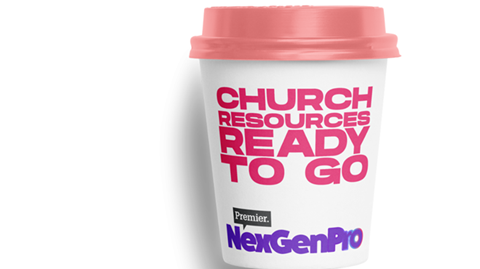- Home
- About
- Topics
- Parenting
- Stories
- Growing faith
 Christian devotions at home for children with additional needs are hard but worth working at
Christian devotions at home for children with additional needs are hard but worth working at Parents are the key to bridging the gap between church and school
Parents are the key to bridging the gap between church and school A tool to help your child ‘take captive every thought’ and walk in freedom with Christ
A tool to help your child ‘take captive every thought’ and walk in freedom with Christ ‘What do you do?’ A Christian mum finds the question triggered more than she expected
‘What do you do?’ A Christian mum finds the question triggered more than she expected
- NexGenPro
- Donate
The power of the tongue
By Jenny Cheung is a schools’ worker with Scripture Union Scotland, leads the children’s team at CLAN Gathering (New Wine Scotland) and is a volunteer on a youth residential for Scripture Union England and Wales. 2019-12-12T00:00:00

Subscribers only: Download as a PDF here.
This article is for subscribers only - SIGN IN here
If you want to read more, subscribe now for instant access to 1000s of resources, advice, ideas and support for anyone involved in family, youth and children’s ministry.
PLUS receive a weekly newsletter to keep you up to date with what’s new, what’s seasonal and what’s in the news!
If you are already a NexGenPro subscriber, SIGN IN
Related articles
-
 Article
ArticleNew film The King of Kings is a pleasant, family-friendly, cat-approved retelling of the gospel
2025-03-25T09:00:00Z By Simeon Lumgair
Angel Studios’ The King of Kings is an animated film directed by Seong-ho Jang, loosely inspired by Charles Dickens’ lesser-known work, The Life of Our Lord. Boasting a voice cast so stacked it could pass as a Who’s Who of Hollywood - including Kenneth Branagh, Uma Thurman, Mark Hamill, Pierce Brosnan, Roman Griffin Davis, Forest Whitaker, Ben Kingsley, and Oscar Isaac - the film reimagines the gospel story through Dickens’ eyes, turning it into a bedtime tale for his son, Walter. And if that sounds like a quaint, heartwarming setup, don’t worry - there’s also a cat for comic relief.
-
 Article
ArticleThe new Netflix series Adolescence raises difficult but essential issues for Christian parents to grapple with
2025-03-24T16:35:00Z By Sara Taylor
Few television shows capture the emotional chaos of growing up as honestly as Netflix’s latest series, Adolescence. Diving deep into the complex struggles faced by young people today, this is more than just a typical coming-of-age drama. With its innovative use of single-take episodes, its raw and poignant cinematography immerses you into a world of identity crises, societal pressure, online dangers, and the hidden pain of those caught in the fallout of serious mistakes.
-
 Article
ArticleHelping your teen navigate Snapchat: A Christian parent’s guide to helping them flourish online
2025-03-17T15:24:00Z By Sarah Baggaley
In today’s digital world, social media is a big part of many teens’ lives. Snapchat, with its disappearing messages, fun filters, and real-time updates, is particularly popular among young people. While these features can offer entertainment and connection, they also bring risks that parents need to be aware of. As Christian parents, it can be challenging to help our teens navigate platforms like Snapchat while keeping them safe, grounded in faith, and aware of the potential dangers. This guide will help you find that balance.
More from Resources
-
 Article
ArticleFour parables of Jesus - Session 1-4
2023-07-05T11:17:00Z
Our Together resource is, as always, jam-packed full of ideas and activities to help the children and young people in your groups discover more about God, grow in faith and deepen their friendship with Jesus. Together is a curriculum resource for churches to use in their Sunday ...
-
 Article
ArticleFour parables of Jesus - Session 1-4
2023-07-05T11:13:00Z
Our Together resource is, as always, jam-packed full of ideas and activities to help the children and young people in your groups discover more about God, grow in faith and deepen their friendship with Jesus. Together is a curriculum resource for churches to use in their Sunday ...
-
 Article
ArticleFour parables of Jesus - Session 1-4
2023-07-05T11:09:00Z
Our Together resource is, as always, jam-packed full of ideas and activities to help the children and young people in your groups discover more about God, grow in faith and deepen their friendship with Jesus. Together is a curriculum resource for churches to use in their Sunday ...
- Topics A-Z
- Writers A-Z
- © 2025 NexGen
Site powered by Webvision Cloud





























